
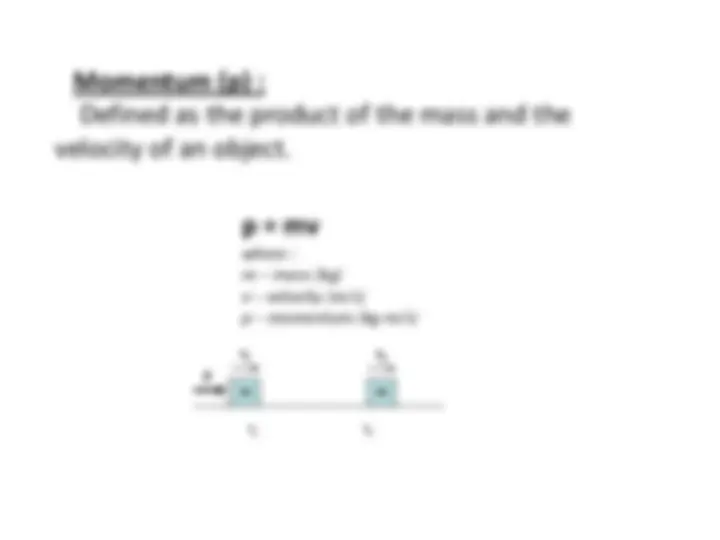
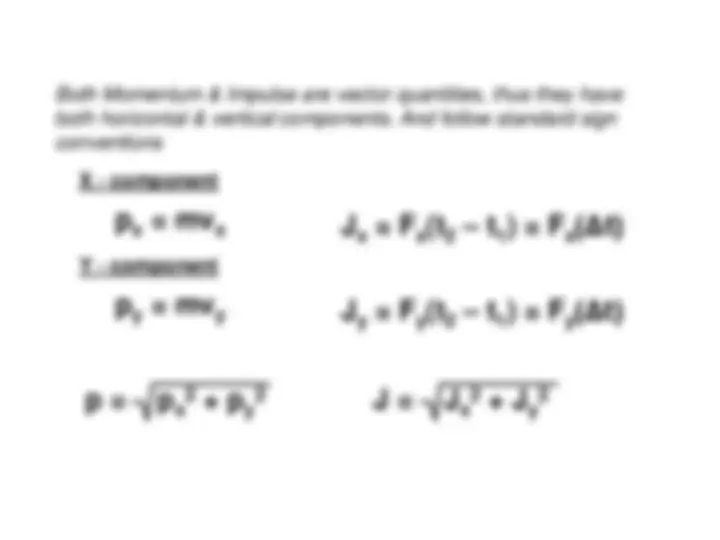
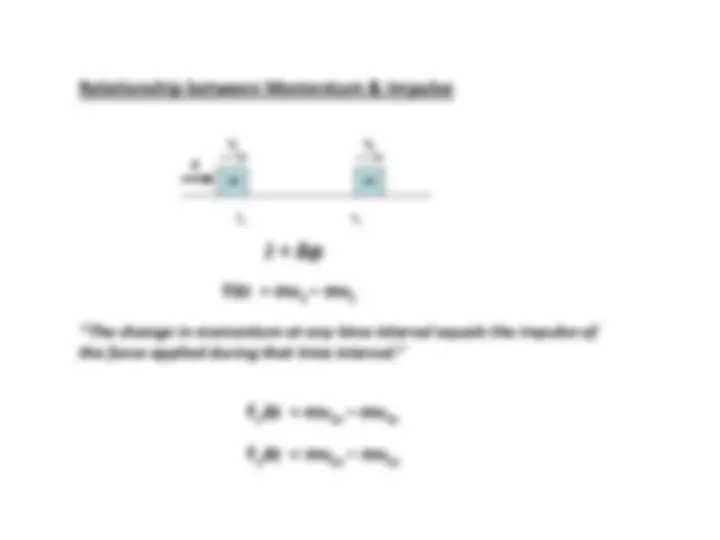
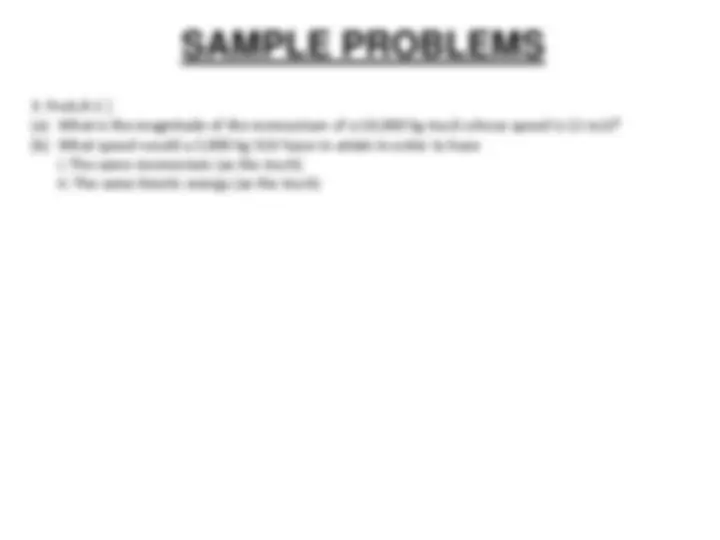
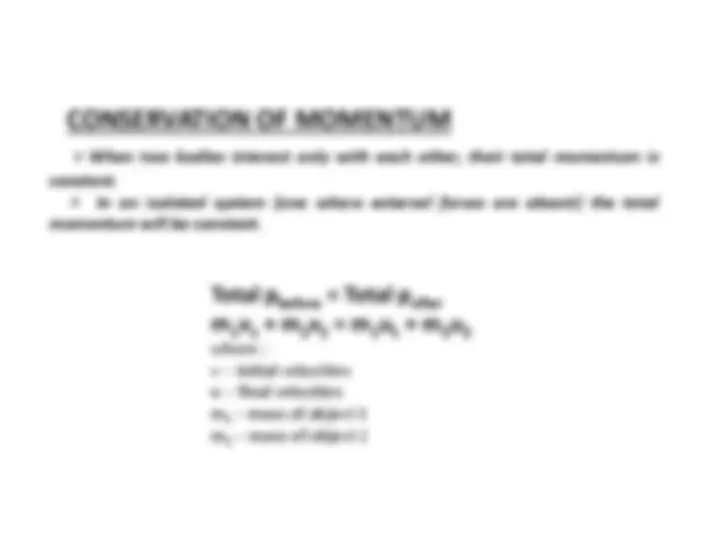
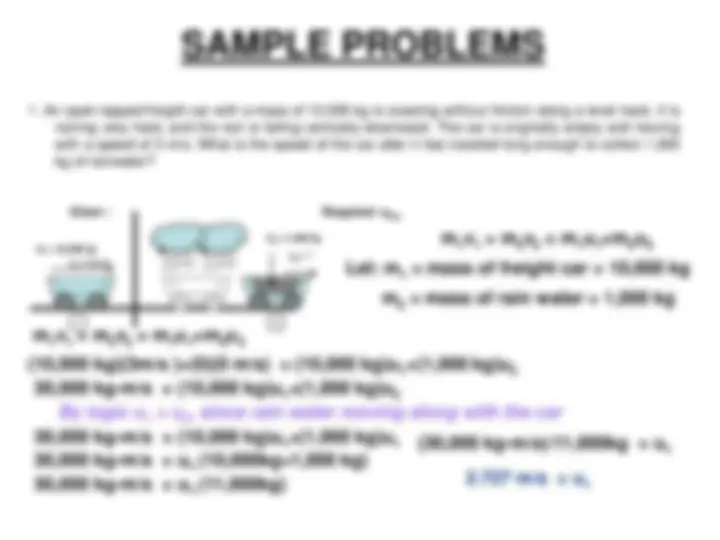
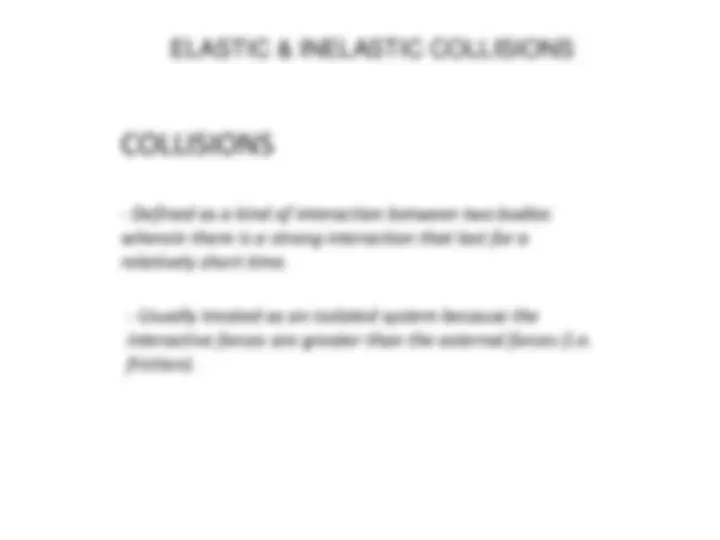
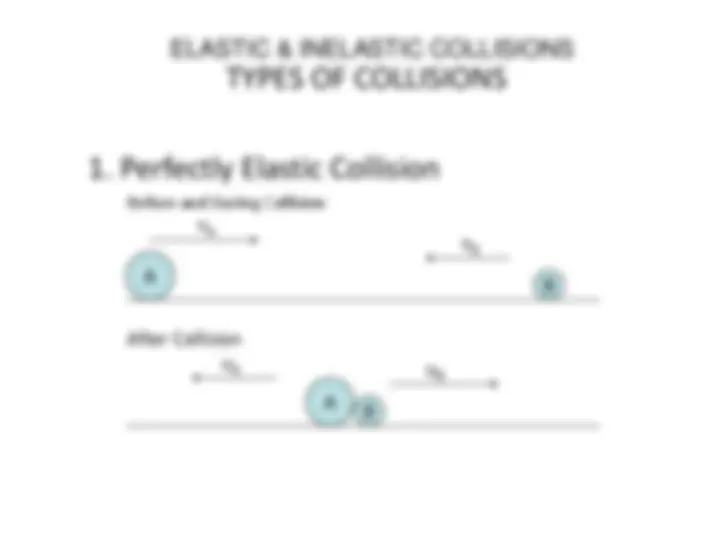
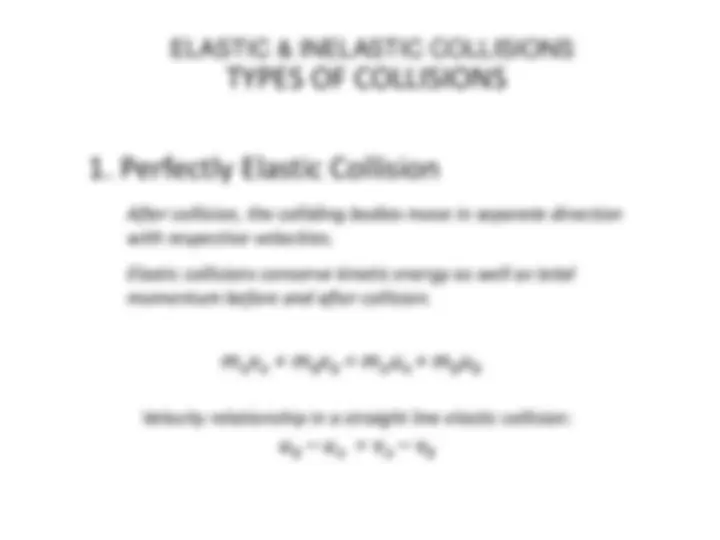
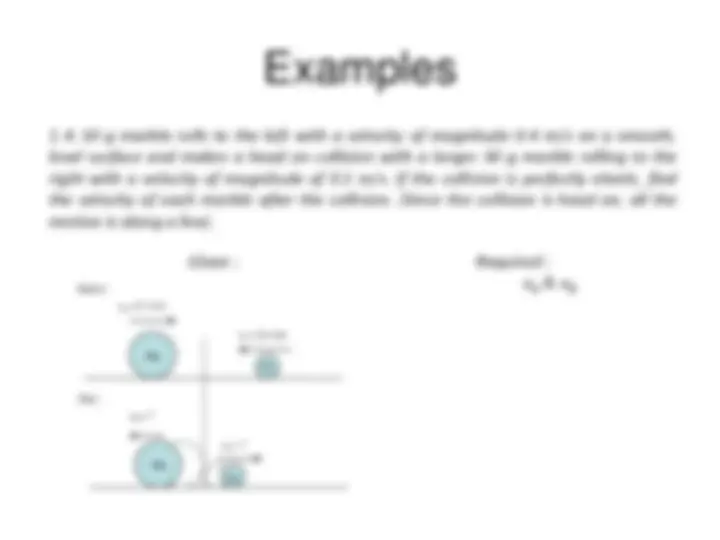
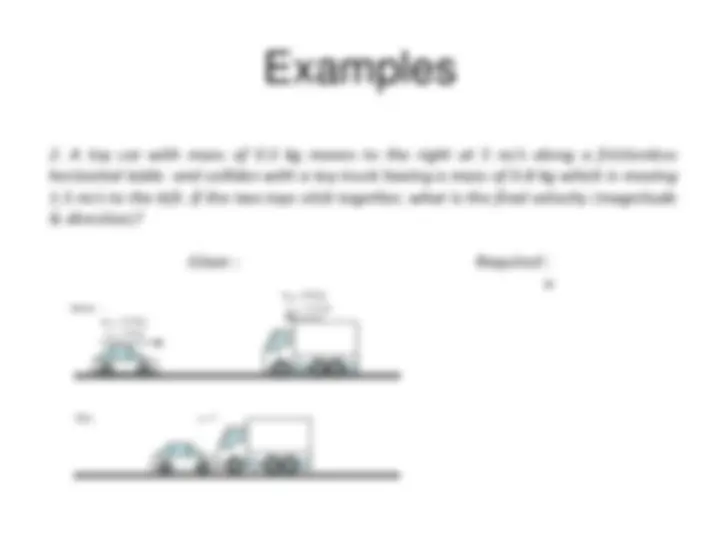
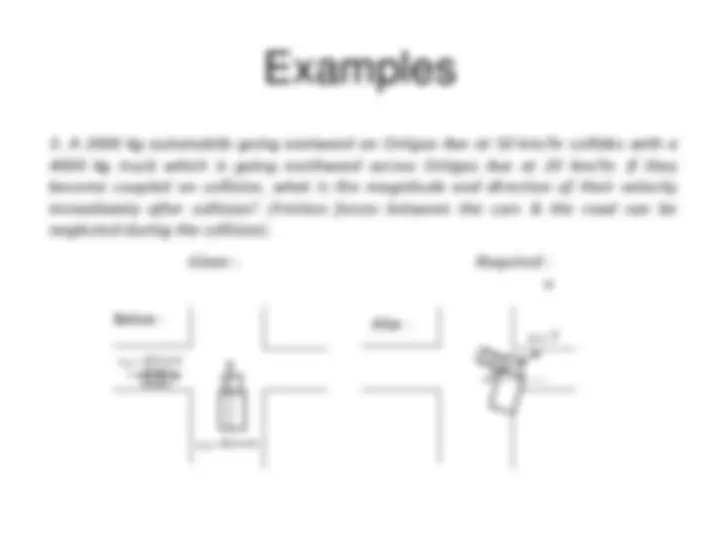
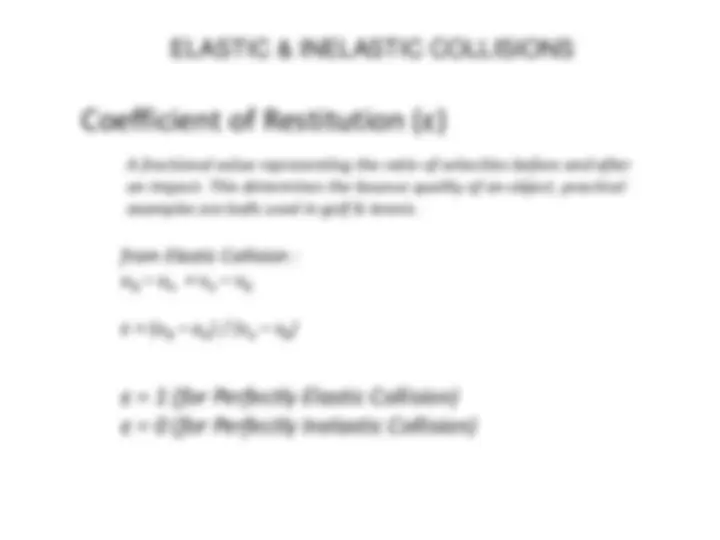
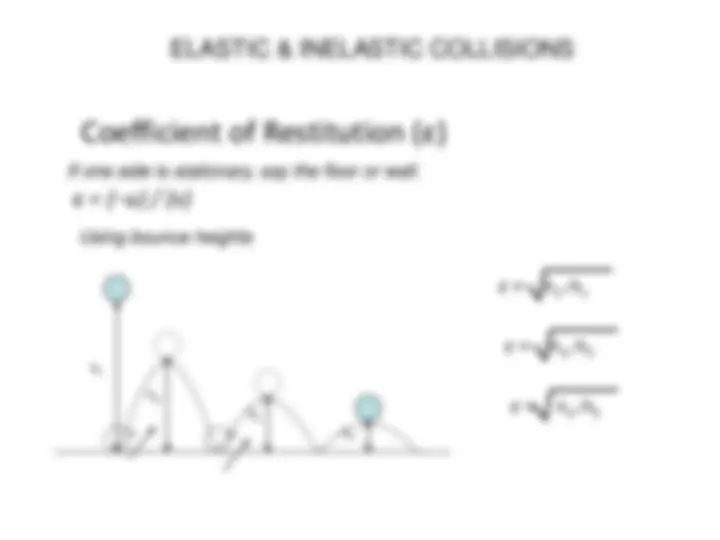


Study with the several resources on Docsity

Earn points by helping other students or get them with a premium plan


Prepare for your exams
Study with the several resources on Docsity

Earn points to download
Earn points by helping other students or get them with a premium plan
Community
Ask the community for help and clear up your study doubts
Discover the best universities in your country according to Docsity users
Free resources
Download our free guides on studying techniques, anxiety management strategies, and thesis advice from Docsity tutors
All the topics that the Impulse and Momentum will cover. Unlock it and see it yourself; I will ensure it will help you.
Typology: Lecture notes
1 / 22

This page cannot be seen from the preview
Don't miss anything!















- t
where : F – applied constant force ( in Newtons) Δt – time interval (in seconds) J – Impulse ( in Ns) F m m v 1 v 2 t 1 t 2
Both Momentum & Impulse are vector quantities, thus they have both horizontal & vertical components. And follow standard sign conventions X - component
- t
Y - component
- t
F m m v 1 v 2 t 1 t 2 Relationship between Momentum & Impulse J = Δp FΔt = mv 2 – mv 1 “The change in momentum at any time interval equals the impulse of the force applied during that time interval.” FxΔt = mv2x – mv1x FyΔt = mv2y – mv1y
v 1 = 50 m/s Fx Fy F 30 ° x-component : vectors to the right (+) FxΔt = m(v2x – v1x) Fx = m(v2x – v1x) / Δt Fx = (0.145kg) [(-65m/s)(cos30°) – (+50m/s)] / (0.00175 s) F x = - 8,807 N y-component : vectors going up (+) FyΔt = m(v2y – v1y) Fy = m(v2y – v1y) / Δt Fy = (0.145kg) [(+65m/s)(sin30°) – 0] / (0.00175 s) F y = +2,692.9 N
Given : Required :ucar m 1 = 10,000 kg v 1 = 3 m/s m 2 = 1,000 kg u 1 =? m 2 = mass of rain water = 1,000 kg m 1 v 1 + m 2 v 2 = m 1 u 1 +m 2 u 2 (10,000 kg)(3m/s )+(0)(0 m/s) = (10,000 kg)u 1 +(1,000 kg)u 2 30,000 kg-m/s = (10,000 kg)u 1 +(1,000 kg)u 2 By logic u 1 = u 2 , since rain water moving along with the car 30,000 kg-m/s = (10,000 kg)u 1 +(1,000 kg)u 1 30,000 kg-m/s = u 1 (10,000kg+1,000 kg) 30,000 kg-m/s = u 1 (11,000kg) (30,000 kg-m/s)/11,000kg = u 1 2.727 m/s = u 1 1 2
mAvA + mBvB = mAuA+mBuB
2. Given : Required :uA (1kg)(0 m/s)+(2kg)(0 m/s) = (1kg)uA+(2kg)(0.9 m/s) uA = 1.8 m/s to the left 1 2 A mA = 1kg mB = 2 kg B A uA =? uB = 0.90 m/s B 0 = (1kg)uA+1.8kg-m/s **- 1.8 kg-m/s = (1kg)uA (- 1.8 kg-m/s)/1kg = uA
ELASTIC & INELASTIC COLLISIONS COLLISIONS
- Defined as a kind of interaction between two bodies wherein there is a strong interaction that last for a relatively short time. - Usually treated as an isolated system because the interactive forces are greater than the external forces (i.e. friction).
ELASTIC & INELASTIC COLLISIONS TYPES OF COLLISIONS
ELASTIC & INELASTIC COLLISIONS TYPES OF COLLISIONS
ELASTIC & INELASTIC COLLISIONS TYPES OF COLLISIONS
_2. A toy car with mass of 0. 3 kg moves to the right at 5 m/s along a frictionless horizontal table and collides with a toy truck having a mass of 0. 8 kg which is moving
3. A 2000 kg automobile going eastward on Ortigas Ave at 50 km/hr collides with a 4000 kg truck which is going northward across Ortigas Ave at 20 km/hr. If they become coupled on collision, what is the magnitude and direction of their velocity immediately after collision? (Friction forces between the cars & the road can be neglected during the collision). Given : Required : u vcar = 50 km/hr vtrk = 20 km/hr u =? Before : (^) After :